Owning indoor plants is one of the simple ways that we brighten up our living space. All plants are beautiful, beneficial, and brighten up our moods.
But if you’re here I’m guessing you either ran out of shelf or floor space or just want to start hanging your plants up around your home!
Hanging plants are one way we can have a few more plants in our homes once we run out of shelf and floor space! However, it can be difficult knowing where to put them if you live in an area that lacks sunlight.
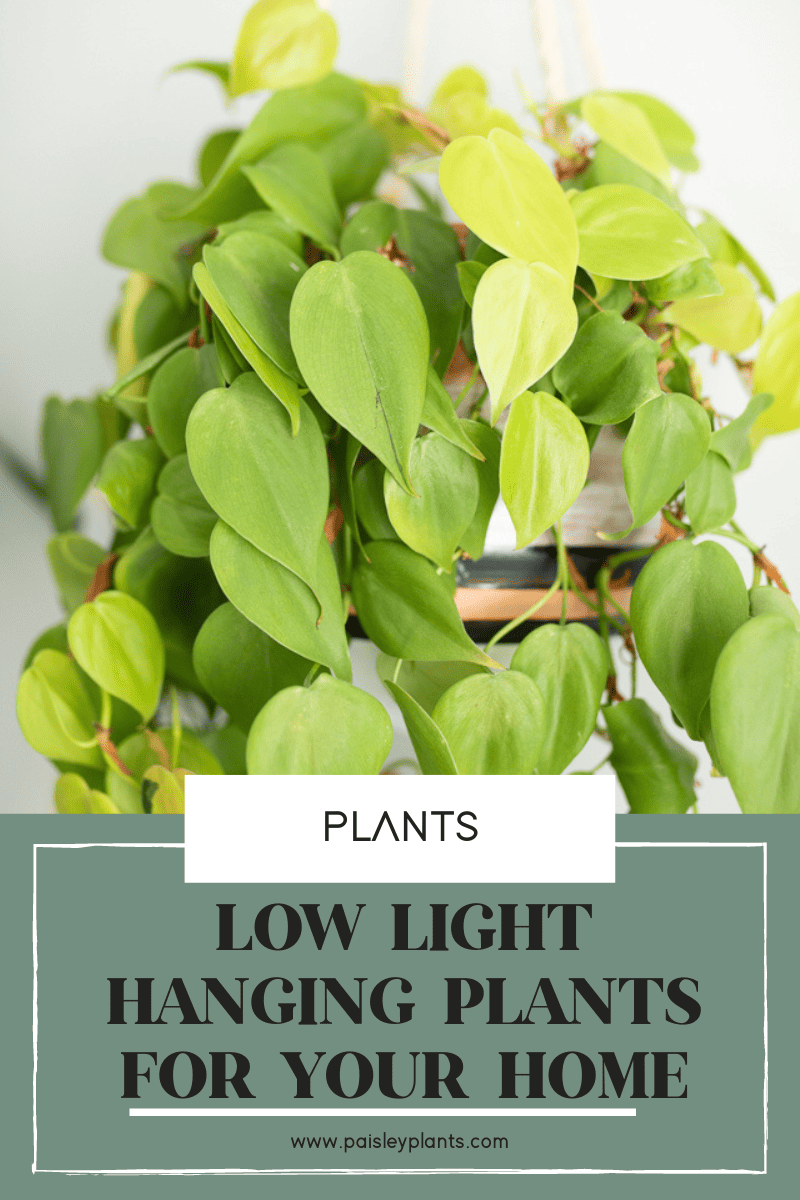
Places such as apartments or dormitories or even a dark corner of your living room have a tendency to lack the sunlight that is necessary to keep many varieties of plants alive.
However, this does not mean that you have to give up your desire to have a home filled with beautiful hanging plants. There are many low light plants that don’t require a full day’s worth of sunlight. Read on to learn more about the best indoor hanging plants for low light rooms.
Table of Contents
Best Low Light Hanging Plants
1. Pothos
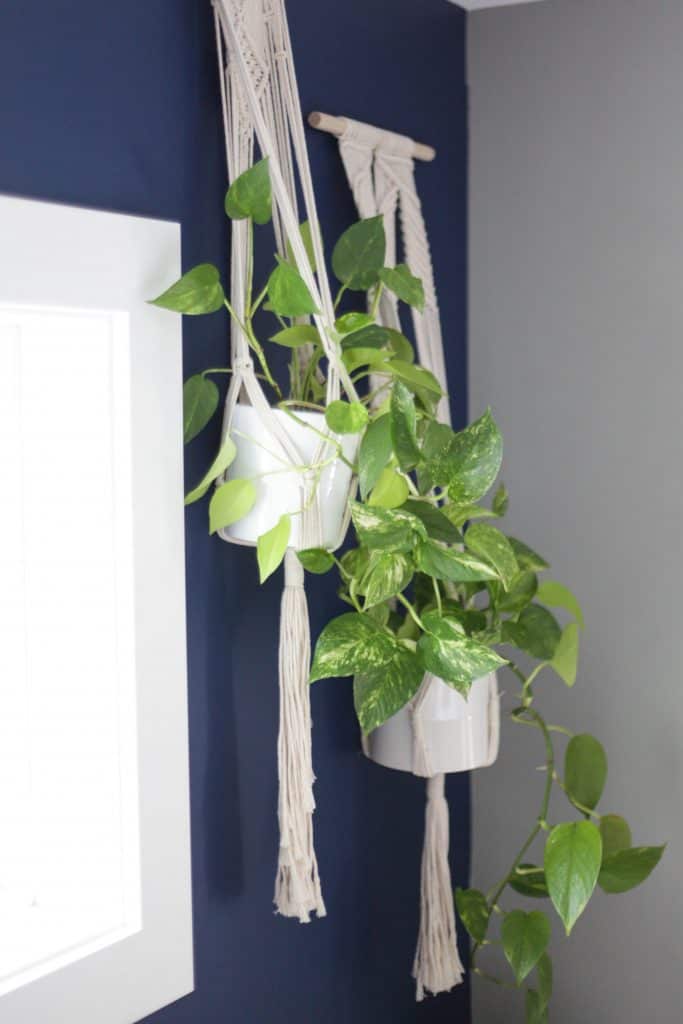
Native to the French Polynesian Islands, the pothos (Epipremnum aureum), also called Devil’s Ivy, lives under the canopy of the tropical rainforest in its natural habitat. Under the shade of trees, the pothos is capable of living in low light conditions.
As tropical plants, pothos plants require warm weather and humid air in order to thrive. They will tolerate most household temperatures, though the ideal range is between 70° and 80° F. Avoid placing a pothos near a drafty window or air conditioning vent, where the temperatures are coldest.
While pothos do not require sunlight, low light conditions cause the pothos to grow at a slower rate than those growing in full sun. If you own a variegated pothos (such as a manjula pothos), it is possible that the leaves will start to lose their variegation and revert back to green.
I personally own many, many pothos and have about 5 of them in a hanging pot. They all get different amounts of light – some get just a little bit of indirect sunlight while others are totally out of reach of the sun – and they all do great!
Get more pothos plant care tips here!
2. Snake Plant
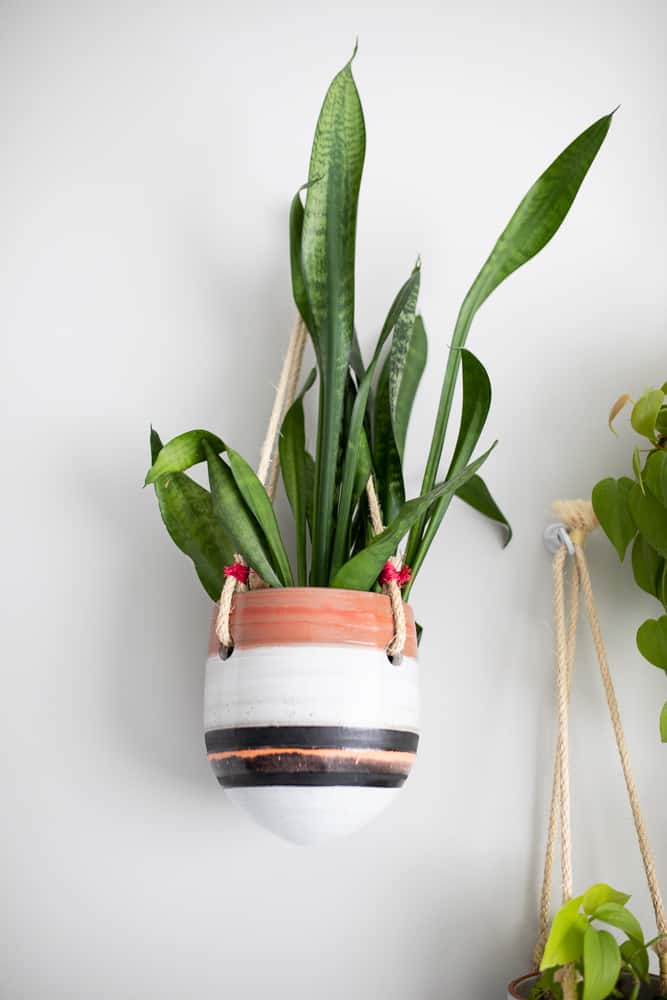
The snake plant (Sansevieria trifasciata) prefers to grow in areas that have bright, indirect light, though it is not opposed to growing in shade. Snake plants that grow in the shade tend to have a slower rate of growth compared to those grown in a bright room.
Do not place your snake plant in a room with a lot of direct sunlight. Snake plants are particularly sensitive to direct light; it can cause the leaves to become yellow and discolored.
If you are moving your snake from a shady location to a bright location, do so carefully. Place the plant in a new environment for a few hours every day and gradually increase the exposure time in order to avoid shocking the plant. Snake plants are some of the best plants for beginners since they’re so hard to kill!
Find snake plant care tips on this post!
3. HeartLeaf Philodendron

Heartleaf philodendrons, characterized by their unique heart-shaped leaves, grow vigorously in an environment with bright, indirect light. However, these plants are known to survive in low-light, shady conditions.
Keep in mind that shady conditions can slow the heartleaf’s growth and cause the vines to have a “leggy” appearance. You can combat this by giving your philodendron a regular pruning, which is helpful in maintaining its physical appearance.
4. Monstera Adansonii
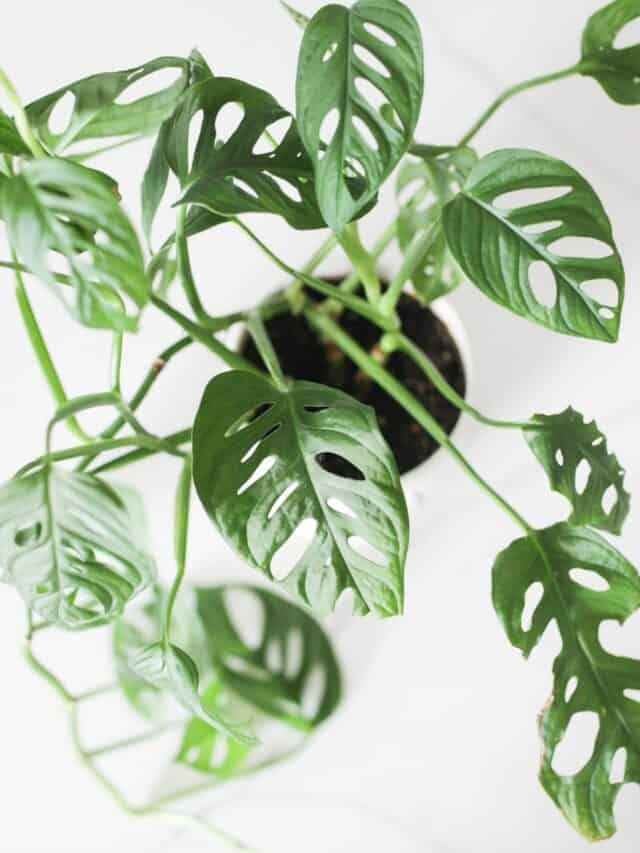
The Monstera adansonii is native to the shady jungles of South and Central America, where it lives under the shade of tree canopies. In your home, the monstera adansonii will survive well even in low-light conditions, as long as its preferred air and high humidity levels are met.
For a healthy monstera, maintain the air temperatures between 64° and 80° F throughout the year, with an air humidity around 60%.
Learn how to grow a Monstera adansonii!
5. Prayer Plant
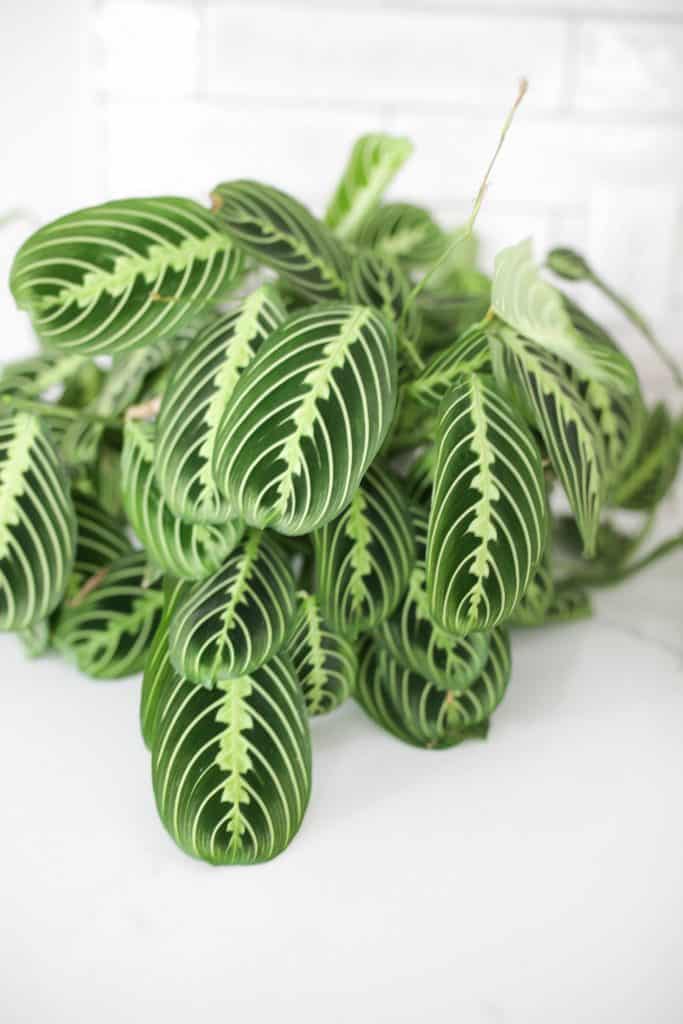
Prayer plants are capable of tolerating low-light conditions during their active growing period (spring and summer), although they have a preference for bright, indirect light.
If you have been growing your prayer plant in shady conditions throughout the spring and summer, it is beneficial to your plant to move it into a location with bright light in order to help maintain growth. Prayer plants can sometimes completely die back during the fall & winter, so do not worry if the plant seems to be dying- this is simply a response to the changing seasons.
Despite enjoying bright light, prayer plants should never be placed in an area with direct sun. Prayer plant leaves are very sensitive to intense sun rays and can burn their leaves, fade the color, or develop splotches.
Find this lemon lime prayer plant and growing tips here!
6. Staghorn Fern
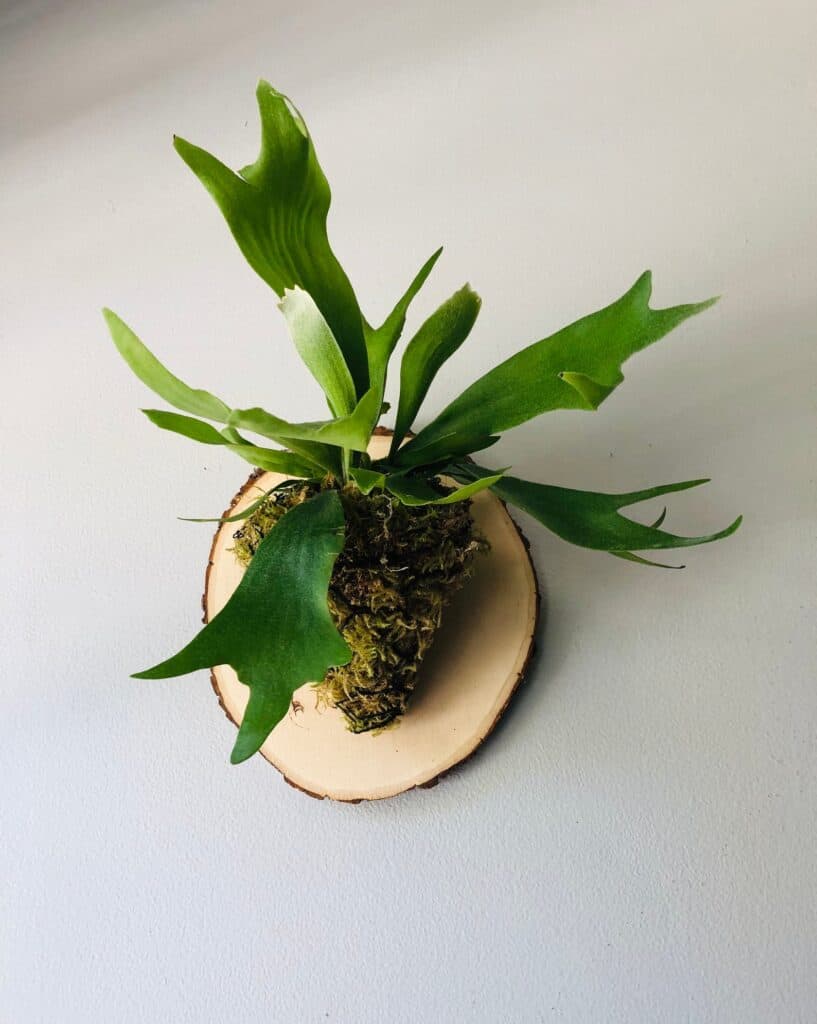
The staghorn fern is especially sensitive to bright light, even when it is indirect and are a good choice for low light spaces. This plant’s preferred lighting condition is partial shade where it lives comfortably.
By all means, direct sunlight should be avoided at all costs for these shade-loving plants. Exposure to direct light can severely burn the staghorn fern’s unique leaves. If you notice the edges of your staghorn fern’s leaves are brown and crisp, then this is a sign that your plant is getting too much light.
Want to grow a staghorn fern? Check out this post!
7. English Ivy
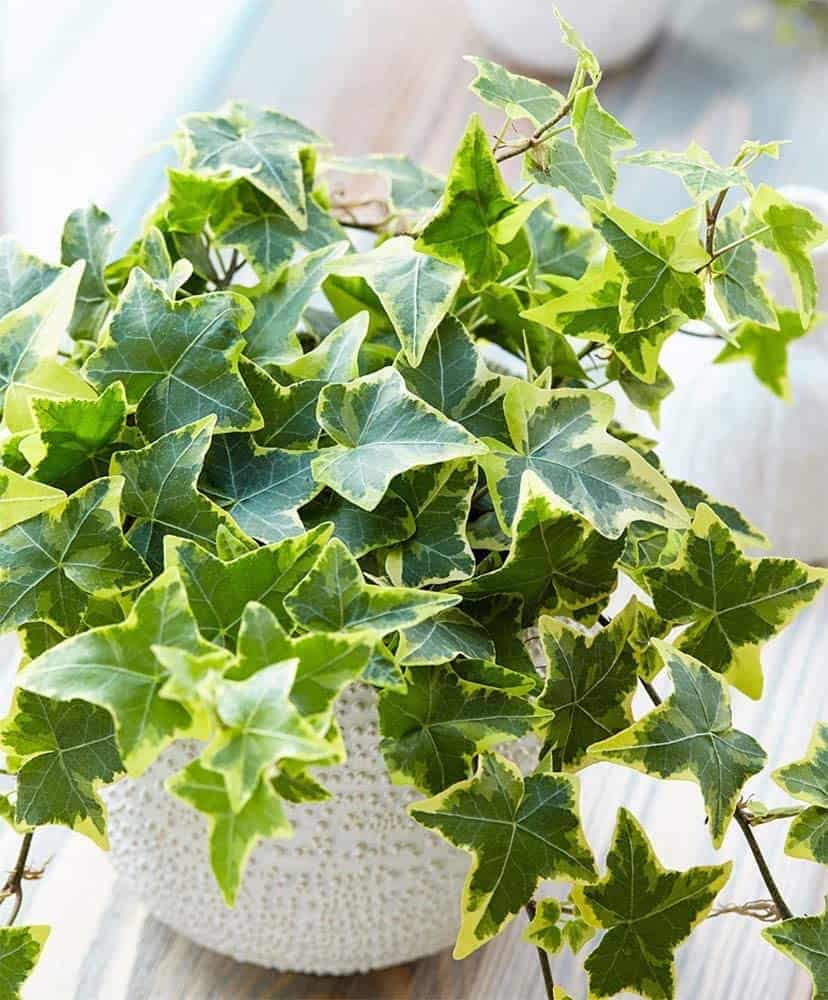
English Ivy’s light requirements differ depending on where you are growing it. When growing English ivy indoors, this plant prefers to have bright, yet indirect light.
However, outdoor English ivy is much more flexible when it comes to lighting preferences; they will tolerate anything from partial shade to bright light. In the winter, English ivy benefits greatly from being exposed to more sunlight in order to help maintain their growth.
Check out some English ivy propagation tips!
8. ZZ Plant
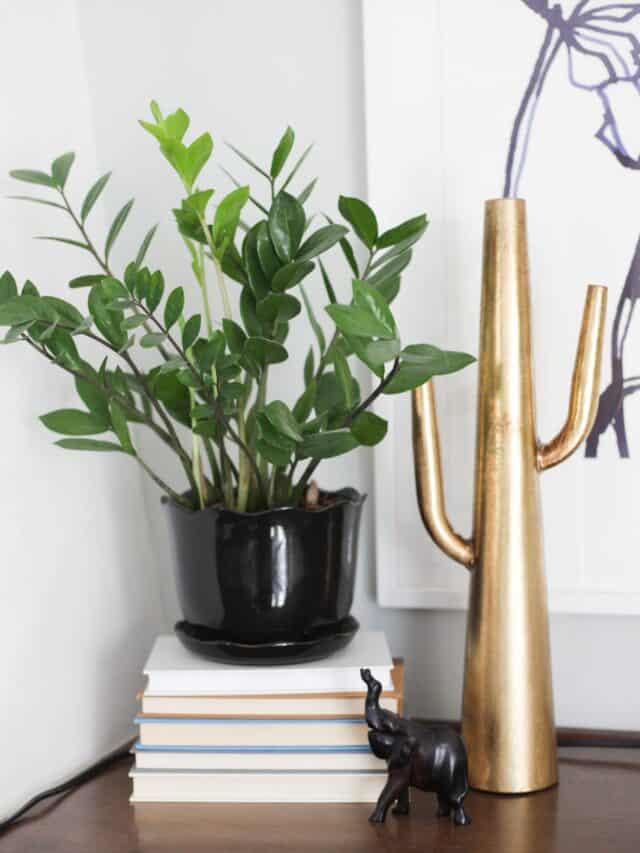
The ZZ plant is a great choice when looking for a hanging plant that does not need light. In fact, the ZZ plant is capable of withstanding rooms that have no light at all, instead they will accept artificial light in lieu of natural sunlight.
However, maintaining a warm and humid environment is still important for the ZZ plant. Place it in a room that is somewhere between 60° and 80° F, but no lower than 45°.
ZZ plants will tolerate normal household humidity levels, though if you are concerned with the humidity of your home, a pebble tray or electric humidifier will get the job done.
Learn how to care for a zz plant!
9. Spider Plant
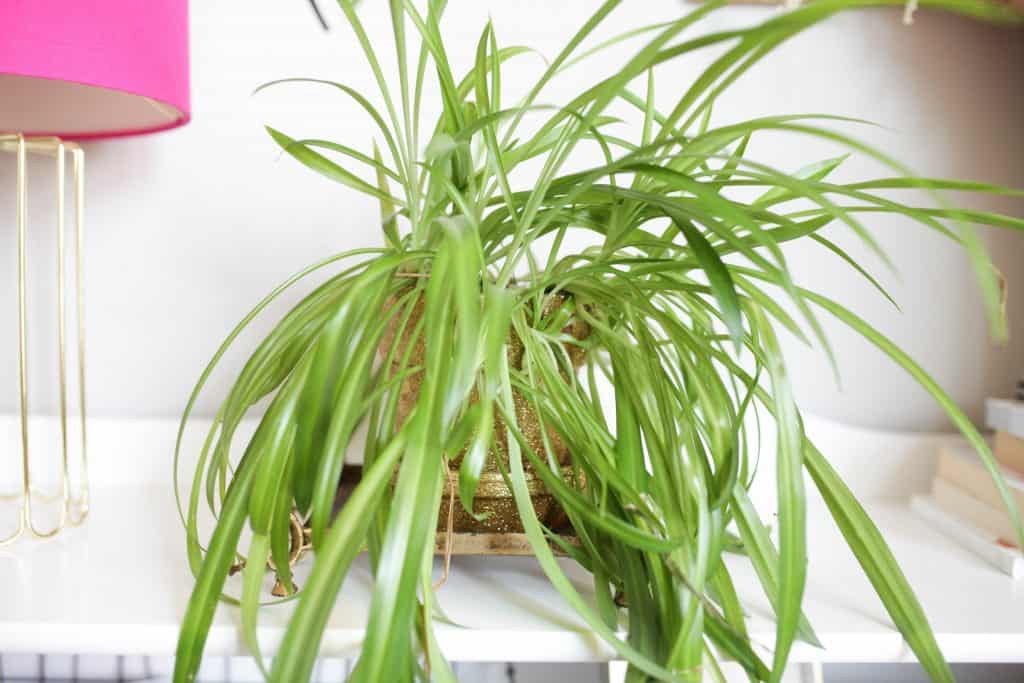
The spider plant (Chlorophytum comosum) is another great low light plant that is great in a hanging planter with minimal natural light. This is the perfect plant for beginners since they’re very hardy and easy to to grow.
Like most of the plants on this list they do best with bright, indirect light but can survive in lower light environments. I personally have my spider plants in a hanging basket in a variety of light environments from higher light to very low light and they all do great!
These plants like to be watered about once a week or whenever their soil is dry to the touch. Don’t worry about repotting them often since they like to be root-bound. Once they’re mature enough they’ll start producing babies and you can share them with friends, neighbors or keep them for yourself!
Find growing tips for your spider plant!
General Tips for Low-Light Plants
Select the Right Varieties
When selecting a plant to bring home, be mindful of the different varieties of each species of plant, as certain varieties can have different light preferences.
For example, the manjula pothos are an example of a variegated plant. Variegated plants require consistent, bright light in order to maintain the variation on their leaves.
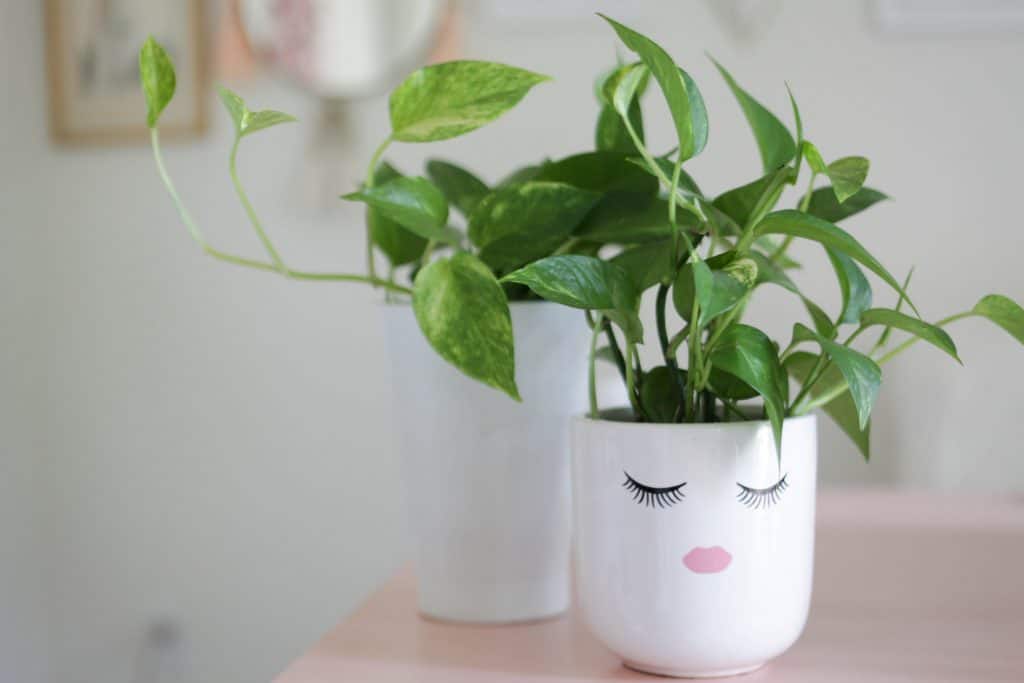
Without light, the plants produce more chlorophyll, which causes these leaves to revert to their regular green hue.
If you are purchasing a hanging plant for the purpose of keeping it in a shady area, then it is illogical to purchase a variegated plant, as it will eventually regress into a non-variegated plant.
It will also save you money, as variegated plants tend to be more expensive than a monochromatic variety.
Expect Slow Growth
As you may notice with many of these plants, low-light tends to slow down their overall growth pattern. Plants that live in low-light conditions are more focused on conservation and survival, while plants that live in the sun are more focused on growth.
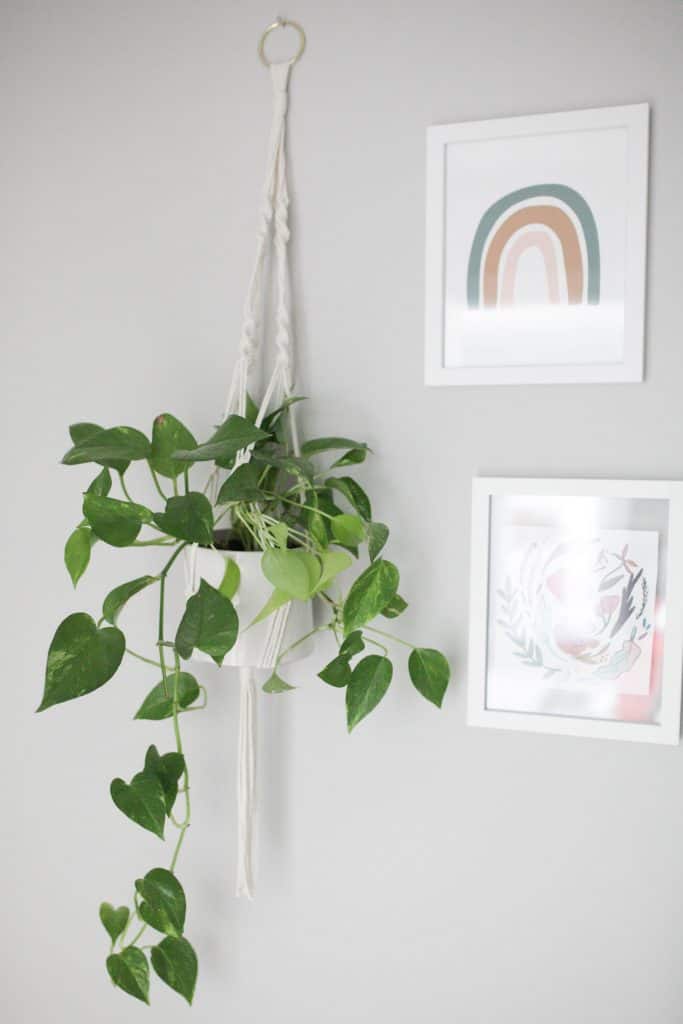
While these plants don’t necessarily need bright light to survive, it is needed for vigorous growth. Keeping a plant in a location that lacks sunlight will yield a slower-growing, less bushy plant. If you are comfortable with a slow-growing plant, then these species are a perfect match.
Water Less
A lack of sunlight also means a decrease in the rate of evaporation in the soil, which means the soil tends to stay moist for longer periods of time. Your low-light plants should only be watered when the soil has almost dried up.
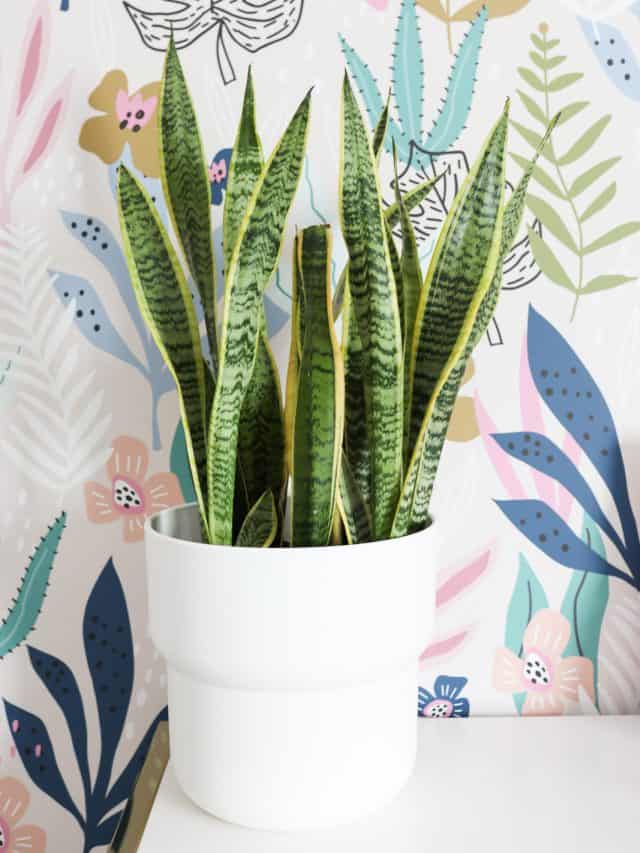
In this situation, it can be very easy to overwater your plants. Don’t be afraid to stick a finger into the soil to gauge the moisture levels. It’s better to under-water your plants than overwatering them. Waterlogged soil can have the potential to cause disease to your plant such as root rot.
Fertilize Less
Because these plants’ growth rates will be slowed down by the shady conditions, there is no need for frequent doses of fertilizer. Some gardeners make the mistake of thinking that low light conditions require more fertilizer in order to compensate for the lack of sunlight. This can actually be quite counterproductive to the health of your plant.
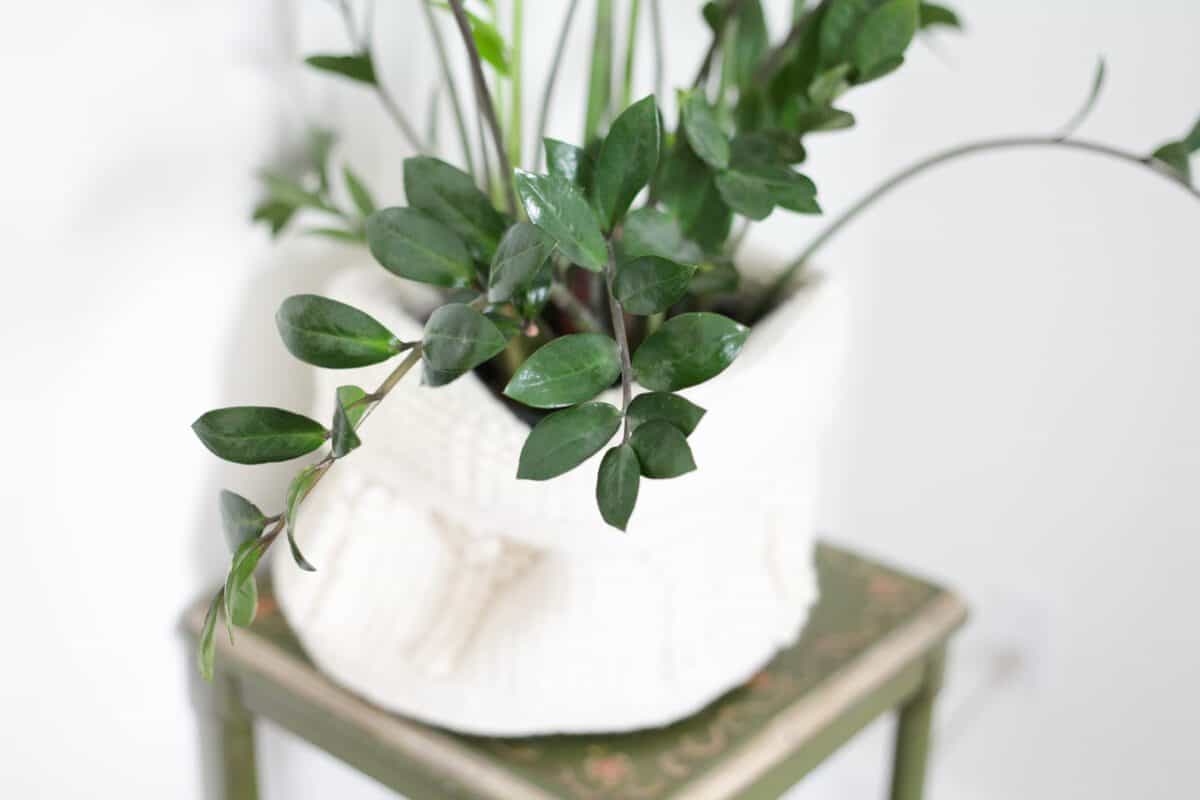
Because the plant has no need for it, the fertilizer will remain in the soil of the plant with nowhere to go. This could cause the soil to acidify to the point where the soil is uninhabitable to the plant.
Fertilizer should be used sparingly for these plants. A diluted dose of balanced fertilizer is suitable once a month during the spring and summer only.
Conclusion
It is a common misconception that you need abundant sunlight in order to have a beautiful and thriving collection of plants. In truth, this is not the case at all. The best part about low-light houseplants is the wide varieties and peculiarities of each one.
Just because your home doesn’t get a lot of light does not mean that you have to deprive yourself of hanging plants. These 9 varieties of plants are only just scratching the surface. There is truly a plant out there to match everyone’s preferences!

